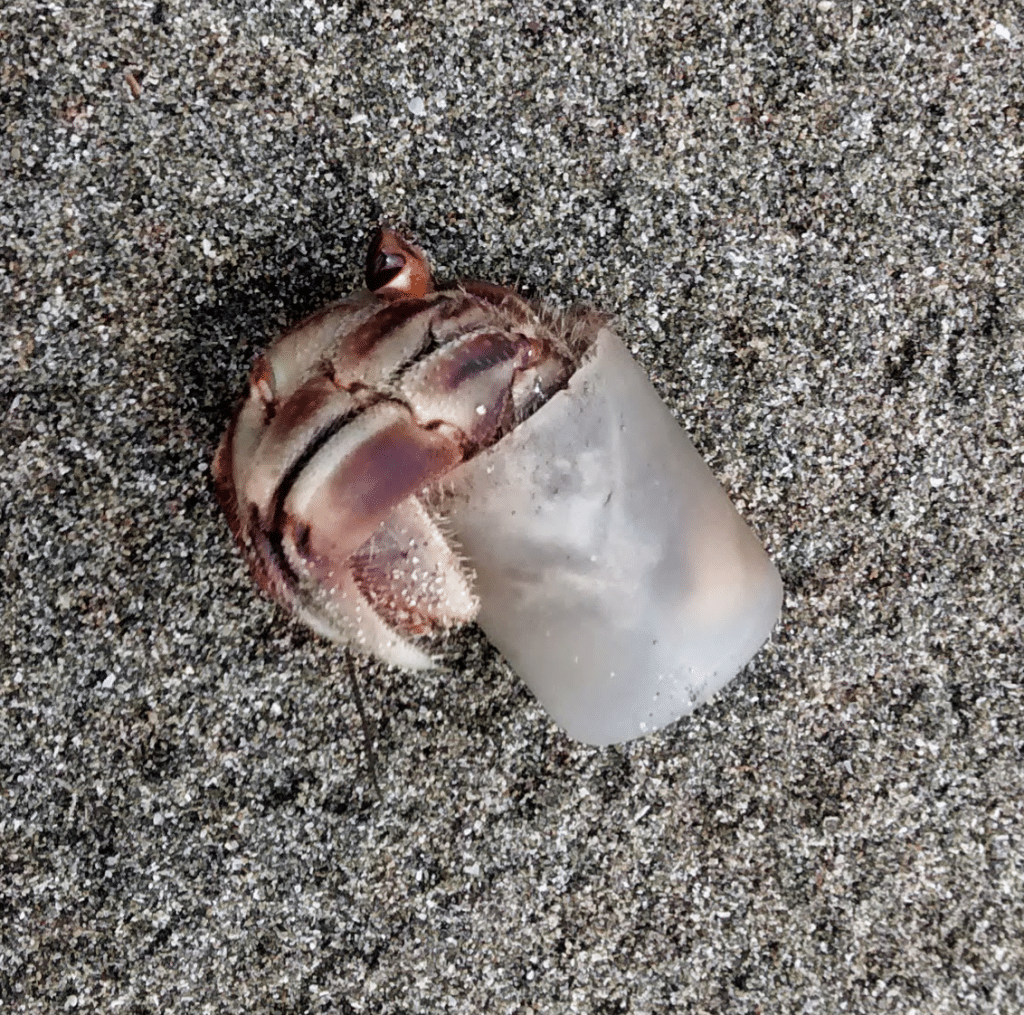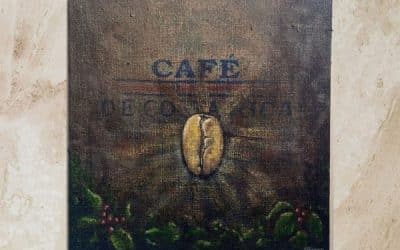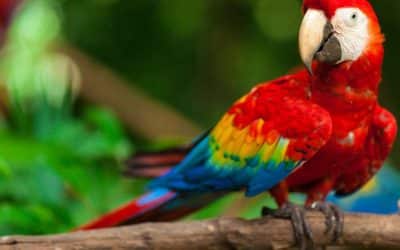As the day winds down and the sun dips below the unspoiled shoreline of Las Baulas National Marine Park in Costa Rica, its shimmering rays cast a warm glow on the vibrant shells scattered along the beach. Amidst these shells, one may catch a glimpse of the elusive Ecuadorian hermit crabs emerging from their temporary homes, their watchful eyes scanning for any potential dangers. These crabs have formed a close-knit community, understanding that their survival depends on their unity. They have mastered the intricate process of shell-swapping, a complex ritual that ensures each individual has a suitable abode to grow in, as they can live up to 15 years. But their cooperative nature goes beyond just swapping shells, as they work together to overcome the challenges of their environment, whether it’s evading predators or foraging for food. Their social behavior often surprises those who come across them, as the term “hermit” crab may suggest a solitary existence. However, these crabs are highly sociable and thrive in the company of their kind, offering a captivating glimpse into the fascinating world of these extraordinary creatures.
In the park, Coco, a fearless little hermit crab, resides in a small community. At the age of three, she has outgrown her stunning black and white spotted seashell. It is now urgent for her to seek a bigger shell to accommodate her growing abdomen and alleviate the discomfort caused by its tightness. The once-cozy shell has become too restrictive, and Coco is aware that she must quickly find a larger one to shield her delicate abdomen from the harsh elements.
Coco, with her bright black and white spotted shell gleaming in the sunlight, scurries across the sandy beach. She comes to a halt and indulges in a succulent pineapple head that has been washed ashore. As she feasts on the fruit with her friends, her small shell struggles to contain her growing body. What was once her home has now become a prison, causing her immense discomfort.
The pain is too much for her to bear, and she can no longer eat. She knows that her chances of survival are diminishing. She recalls how other members of her community have perished due to the harsh realities of being homeless.
Just as she was losing hope, Coco’s friend Mango came rushing to her, urging her to follow him quickly. He has discovered the perfect shell for her just down the shoreline. Filled with excitement, Coco and Mango set off to claim her new abode. The endless search along the beach has taken a toll on Coco’s stress levels, exacerbated by the scarcity of shells caused by human activity. But now, her hopes are soaring as she spots a stunningly blue shell in the distance, mesmerized by its size and hue. The sight of it fills her with awe as if she’s about to move into a luxurious mansion in Beverly Hills. With her four tiny feet scrambling, she rushes towards the shell as fast as she can.
Upon reaching the shell, she realizes it is the perfect abode for her. Her excitement knows no bounds and she overflows with joy as she prepares to move in. However, her elation is short-lived. Just as she is about to bid farewell to her old shell and enter her new, magnificent blue mansion, a human appears on the beach and snatches her new home, adding it to a bag full of other shells. Coco lets out a pained chirping cry, pleading, “Please don’t take my home!” But she can only watch helplessly as the human continues to search for more shells. Upon noticing Coco, the human picks her up, only to realize that the shell is already occupied. With a forceful throw, Coco is hurled back onto the ground and the human walks away. Not only has Coco lost her beautiful blue mansion shell, but her friends’ shells are also in the bag. The disappointment and devastation are overwhelming, leaving Coco completely crushed. It is a horrifying experience for her.
The fearless little hermit crab, Coco, must persist on her quest to discover a new dwelling. She is aware that she must soon vacate her current shell. With her tiny pincers quivering, she scuttles through the debris carelessly left behind by humans on the shoreline. Her heart beats with determined apprehension as she searches for a secure and protected abode. However, her concerns go beyond her own survival, as she also ponders the struggles of her fellow hermit crabs in finding suitable homes amidst the vast ocean of pollution and human thieves who steal their shells.

As the minutes tick by, Coco’s hope diminishes. Her time is running out, and she wonders if she will ever find a new home. Frantically scurrying through the debris, her eyes catch a glimmer of something. It’s a clear plastic cap from a bottle. In desperation, she knows she must take refuge in this hideous plastic cap or face certain death. The cap will be scorching inside, too small to fully fit her body, but enough to shield her delicate abdomen. She knows she will be shunned and labeled as homeless by the others in the community, just as they have done to others who have resorted to living in plastic. But for now, she has no other option but to seek shelter in the dreadful plastic cap. At least it will buy her some time as she continues her search for a suitable seashell home. As she enters, the intense heat engulfs her, causing her to struggle for breath. With determination, she crawls towards the nearest shade, her tiny legs straining to carry her as she drags herself towards it. Each step weighs heavy on her heart as she thinks of leaving behind her beloved black and white spotted shell for a plastic cap – a thought that fills her with unbearable despair. Exhausted and defeated, she finally settles in the shade in the hot plastic cap, her body fading and broken. The thought of abandoning her cherished shell for a mere plastic cap is too much to bear.
This is not the future she had imagined for herself and her fellow hermit crabs. How did it come to this? How did humans become so blind to the destruction they are causing to the environment? Coco chirps out with a loud scream and a desperate message to all humans. Her voice quivers with emotion as she pleads for their help.
She begs for them to return the sea shells they have taken from the beach, especially the ones that served as home for hermit crabs like herself. She explains how the dwindling supply of large shells has led to the deaths of many hermit crabs who can’t find suitable homes. She implores humans to think about the consequences of their actions and to help save her and her fellow hermit crabs. But will her message be heard? Will humans finally open their eyes and see the harm they are causing? Only time will tell. But for now, Coco and her fellow hermit crabs continue their desperate search for new homes, hoping that one day, they will find a safe and peaceful place to call their own.
At that moment Coco observed a group of three hermit crabs gathered together, she witnessed other crabs quickly joining in for what would become a shell-swapping procession. Without hesitation, Coco knew they were forming a “conga line” and she was eager to join in. This phenomenon typically occurs when a larger hermit crab discovers a new, larger empty shell to move into. Instinctively, they arrange themselves in size order, creating a line along the shore.
Once the larger crab moves into its new home, its vacated shell becomes occupied by the next size crab in the conga line, passing the shells along in size order.
With a burst of adrenaline, Coco eagerly rushes to join the line forming for the shell-swapping parade. Her hopes quickly turn to disappointment as she is forcibly pushed out of the queue. Sadly, she observes that no one is willing to trade their precious shells for a mere plastic bottle cap. She watches on with a heavy heart, realizing her fears have come true.
As the ceremony commences. The largest crab, with its massive claws and regal posture, surveyed its new shell with pride. Then the ritual begins as he moves into his new shell. The other crabs, with their beady eyes and sharp pincers, eagerly awaited their turn to transition into their designated shells. The next in line processes to move into the vacated shell fitting in nicely but just as things seem to be going smoothly chaos breaks out.
An aggressive crap that was not in the lineup crashes the line and snatches up a vacated shell before the next in line could claim it. The conga line ripped into a fighting fizzy, reminiscent of a chaotic Black Friday shopping scene. Each crab frantically fought for a new home, their sharp claws clashing and their shells cracking under the pressure. The craps were all clamoring to secure a new home and it was an all-out brawl.
The shell discarded by the crab crusher was still available. Though weak, Coco makes a dash for it. With her adrenaline running high from desperation,she makes it into the discarded shell. Despite its slightly oversized nature and some minor imperfections, Coco embraced the shell, finding it suitable for the time being. It was a significant upgrade from the plastic cap, allowing her to wiggle her tail comfortably within its spacious interior. The discomfort and heat from her previous constricting shell and plastic cap were now mere memories, replaced by a sense of relief.
As the chaos settled, the crabs took refuge in their new shells. Coco had survived the chaotic frenzy unscathed, though her shell was not the epitome of beauty, it was a temporary sanctuary for the moment.
The journey must continue for Coco, the brave little hermit crab, to find a new home.
You can help Coco by leaving seashells on the beach. We can help protect these remarkable coastal inhabitants. Let us all do our part to preserve their natural home
Coco by leaving seashells on the beach. We can help protect these remarkable coastal inhabitants. Let us all do our part to preserve their natural home






